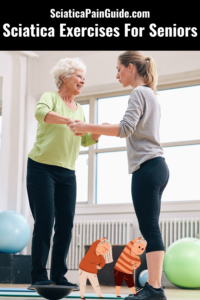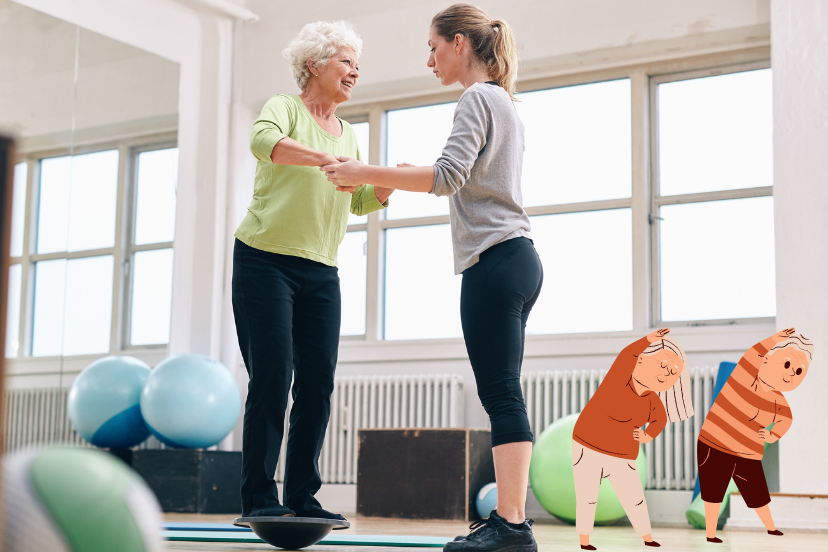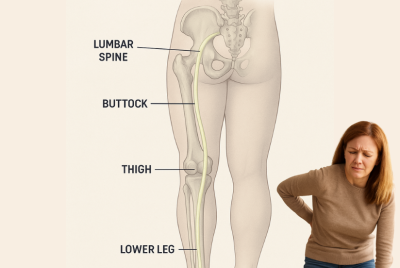Sciatica Exercises for Seniors
Finding Relief Through Movement
Discover effective and gentle sciatica exercises for seniors to relieve pain, improve mobility, and prevent future flare-ups. Learn more now! Dealing with sciatica as a senior can feel overwhelming, but the good news is that movement can be a key part of your relief strategy. In this article, I’m going to walk you through some simple, safe, and effective exercises designed specifically for seniors. If you’re living with that familiar nerve pain, know that you don’t have to suffer in silence. Let’s dive into how movement can make a difference.
Understanding Sciatica in Seniors
What is Sciatica?
Sciatica is sharp, sometimes debilitating pain that runs from your lower back through your hips and down one or both legs. It’s caused by compression of the sciatic nerve, which can happen due to a variety of reasons, including herniated discs, bone spurs, or narrowing of the spine (also known as spinal stenosis).
Why Seniors are More Prone to Sciatica
As we age, our bodies naturally undergo changes—our muscles weaken, our discs lose hydration, and we may develop arthritis. These factors increase the likelihood of nerve compression, which can lead to sciatica. Seniors are particularly prone to this condition due to the wear and tear that accumulates over the years.
The Benefits of Exercise for Sciatica
How Movement Eases Nerve Pain
When you’re in pain, it might seem counterintuitive to move around, but exercise can be one of the most effective ways to manage sciatica. Moving helps to release tight muscles, improve circulation, and reduce inflammation. In short, the right exercises can help relieve the pressure on your sciatic nerve.
Boosting Flexibility and Strength
In addition to relieving pain, exercises that target flexibility and strength can support the muscles around your spine, giving your body the stability it needs to reduce future sciatic episodes. This means not only dealing with the immediate pain but also preventing it from coming back.
Sciatica Exercises for Seniors
Workout For Seniors – Beginner Level
Safety First: Exercising with Sciatica as a Senior
Consulting with a Healthcare Professional
Before jumping into any exercise routine, it’s important to consult with your doctor or a physical therapist, especially if you’re a senior dealing with chronic pain. They can help guide you toward exercises that are both safe and effective for your specific situation.
Listening to Your Body
Pain is your body’s way of communicating with you. If something doesn’t feel right during an exercise, stop immediately. While mild discomfort is normal as you stretch tight muscles, sharp pain is not. Always listen to your body.
Best Sciatica Exercises for Seniors
Stretching to Relieve Pressure
Seated Piriformis Stretch
The piriformis muscle is often the culprit behind sciatic pain. To stretch it, sit on a sturdy chair, place your right ankle over your left knee, and gently lean forward. You’ll feel a stretch in your glutes, which can help relieve pressure on the nerve.
Gentle Hamstring Stretch
Tight hamstrings can worsen sciatic pain. Sit at the edge of a chair, stretch one leg out in front of you, and point your toes toward the ceiling. Lean forward slightly, keeping your back straight until you feel a stretch along the back of your leg.
Strengthening the Core and Lower Back
Pelvic Tilt
This exercise helps strengthen your core and reduce strain on your lower back. Lie on your back with your knees bent and feet flat on the floor. Tighten your abdominal muscles, flatten your back against the floor, and hold for a few seconds before releasing.
Bird Dog Exercise
This is a great exercise to strengthen both your core and lower back. Start on your hands and knees, keeping your back flat. Extend one arm forward while simultaneously extending the opposite leg behind you. Hold for a few seconds, then switch sides.
Improving Posture to Reduce Pain
Wall Sits
Wall sits are an excellent way to engage your core and lower body while improving posture. Stand with your back against a wall and slide down as if you’re sitting in an invisible chair. Hold this position for 10-15 seconds, and then stand back up.
Seated Marching
To keep your hips flexible and improve circulation, try seated marching. Sit in a chair with your feet flat on the ground. Lift one knee toward your chest, lower it, and then repeat with the other leg. This helps keep your muscles moving without putting stress on your lower back.
Daily Movement Tips for Sciatica Relief
Walking: A Simple Way to Stay Active
Never underestimate the power of walking! It’s a low-impact way to keep your muscles moving and maintain flexibility. If you’re dealing with sciatica, start with short walks and gradually increase your distance as your body allows.
Incorporating Gentle Yoga
Yoga, particularly poses that stretch the lower back and hips can be a fantastic addition to your daily routine. If you have limited mobility, look for beginner yoga classes or even chair yoga.
Preventing Future Flare-Ups
Maintaining Consistent Activity
Consistency is key when it comes to managing sciatica. Make exercise a part of your daily routine, even if it’s just a few stretches or a short walk. Staying active keeps your muscles flexible and reduces the risk of nerve compression.
Using Cold Therapy and Heat Therapy
For ongoing pain relief, alternate between cold therapy (to reduce inflammation) and heat therapy (to relax tight muscles). Using a cold pack followed by a heating pad can help manage pain during flare-ups.
FAQs Related to Sciatica Exercises for Seniors
Is it safe for seniors with sciatica to exercise daily?
Yes, engaging in light, low-impact exercises daily is generally safe. However, it is essential to listen to your body and consult with your doctor before starting any new routine.
How long does it take to see results from these exercises?
You may start to feel relief within a few weeks of regular practice, though results vary from person to person. Consistency is key!
Can stretching alone relieve sciatica?
Stretching can significantly reduce sciatic pain by relieving pressure on the nerve, but combining it with strengthening exercises and walking may offer more comprehensive relief.
How can I stay motivated to exercise regularly?
Start small and set achievable goals. Keeping a daily routine and enlisting the help of a friend or family member can also make it easier to stay committed.
Should I stop exercising if my pain gets worse?
If the pain worsens during exercise, stop immediately and consult your doctor. Some discomfort is normal, but sharp or increasing pain should never be ignored.
Are these exercises safe for seniors with limited mobility?
Absolutely! Many of these exercises can be done while seated or with modifications to accommodate limited mobility.
Conclusion: Take Control of Sciatica with Gentle Exercises
Living with sciatica doesn’t mean you have to live in pain. By incorporating these gentle exercises into your daily routine, you can manage your symptoms, improve your flexibility, and prevent future flare-ups. Always listen to your body and consult your healthcare provider before starting any new exercise regimen.
Disclaimer
Please note that this article should not replace professional medical advice. Consult a healthcare professional for an accurate diagnosis and tailored treatment plan.






